Includes affiliate links that help offset our expenses at no cost to you.
There are basically three types of people who venture into bear country; those who are fearful of a bear encounter, those who are ignorant or naïve, and those who are knowledgeable and aware. Having a strong knowledge of bears, an awareness of your surroundings, and maintaining proper behavior in bear country will help to minimize risks and keep you and others safe.

So how do you become knowledgeable and aware? For starters, forget most of what you may have learned on the Internet. The Internet is full of countless “how-to” scenarios, opinions and theories developed by so-called “experts” who have never had a first hand experience. Not only is the information contradictory, but by the time you finally venture out into bear country, your normally 40lb pack will be over-flowing with non-essential deterrents such as electric fences and warning alarms for your campsite, air horns, weapons of various sizes and caliper, and of course, the infamous bear bells.

Knowledge
Knowledge is a critical tool to have in the wilderness. Know your environment, what type of bear, other predator, or danger may be present in the area, and know how to react if a situation does arise.
Statistics:
- Bear attacks are rare; less than 3 fatalities are reported on average per year in the United States and Canada combined. With that said, you are 7 times more likely to die from blunt force trauma caused from a cow, and 8 times more likely to die from a flying champagne cork.
- 40 of the 50 contiguous states are home to one or multiple species of bear.
Species: In the United States and Canada, there are three species of bear; black bears, brown bears (including grizzly, and kodiak), and polar bears. Each species has its own personality and temperament, so distinguishing between is essential.
Black Bears (Ursus Americanas)
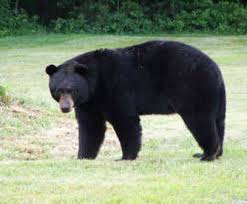
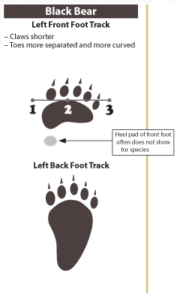
- Medium size bear with colors ranging from black to light blonde.
- Most common bear in Canada and US
- Avid tree climbers
How to survive an attack:
- Stand your ground, make lots of noise, try to make yourself look bigger.
- Fight back; use anything and everything. Aim blows at the black bear’s face, particularly eyes and snout.
- If attacked by a female bear defending her cubs, try to remove yourself as a threat to the cubs.
Brown Bears (Ursus Arctos)

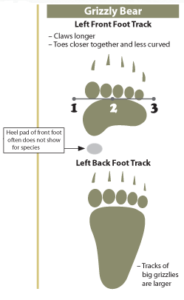
- Larger than black bear with colors ranging from medium to dark brown
- Has a distinctive shoulder hump, which is a muscle that provides the bear extra strength to dig and slash
- Most common in Canada, Alaska, and portions of the northwest United States.
How to survive an attack:
- Don’t run – you will never outrun a bear
- If attacked, play dead. Drop to the ground in fetal position and cover your neck with your hands. Continue to play dead even after the bear leaves after deciding you are no longer a threat to ensure it has actually left.
Polar Bears (Ursus Maritimus)

- Largest land predator with colors ranging from silvery-white to light yellow. Mature males turn yellow as the age.
- Most common in Canada, and northern marine areas of Alaska.
- Avid swimmer. Prefers icy conditions
How to survive an attack:
- Stand your ground, make lots of noise, try to make yourself look bigger.
- Fight back; use anything and everything. Aim blows at the polar bear’s face, particularly eyes and snout.
- If attacked by female bear defending her cubs, try to remove yourself as a threat to the cubs.
Awareness
Bears, of any species, can be unpredictable, so seeing one early and reacting accordingly will decrease the chances of a dangerous encounter. So be alert when traveling through bear country.
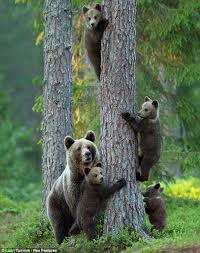
- If you spot a bear in the distance, back away slowly (do not make any sudden or rash movements), and change direction, if possible, to avoid encountering the bear. Maintain a safe distance at all times.
- Never get between a mother and her cubs. A mother bear will protect her cubs by any means necessary.
- Be cautious when approaching open water sources, animal carcasses, or other areas where bears tend to frequent.
- Watch for possible bear signs (scat or bear tracks) on trail or close to camp.
Responsible Behaviors for traveling in Bear Country
Don’t be ignorant while traveling in bear country. Bears may look cute and cuddly, and even majestic from a distance; not so much if provoked. That photo opportunity of a bear eating a fish by the edge of the stream; probably not worth your life by moving in closer for a better shot. If you can see the bear, you are too close. Bears can run upwards of 30 miles/hour. Can you? Here are some additional tips to keep you safe while traveling in bear country:

- Travel in groups
- If you suspect there are bears in the area, make noise, sing (bring a recording of Pathfinder singing folk songs), talk to yourself. Chances are if the bear hears you coming, it will avoid you altogether.
- Use extreme caution when traveling on trails at night.
- If traveling with a dog, keep it under control.
- Maintain a clean camp free from smells:
- cook at least 100 yards from camp
- store all food, trash, and any objects containing a smell (including deodorant and toothpaste) at least 100 yards from camp, hung from a tree at least 14ft up and 4ft away from the trunk.
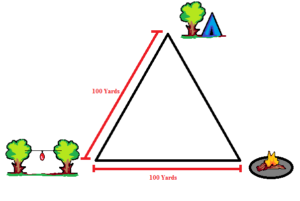
Bear Spray
If you follow the advice given above, it’s unlikely that you’ll ever have a bear encounter where bear spray would make a difference. But that doesn’t mean it can’t happen, and bear spray has proven an effective deterrent when used at close range. Even if you never actually need to use it, carrying bear spray may give you a measure of comfort and there’s nothing wrong with packing a little nonlethal heat if it improves your enjoyment of the outdoors.
If you’re going to carry bear spray, we recommend getting one of the larger cannister sizes (around 9 ounces), as it may give a few more bursts. And you need some way to carry it, so it’s worth getting a belt holster too. There are many reputable brands, and here’s the one that we carry:
See also: Our Real Life Bear Encounters
